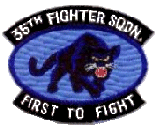Lance Peter Sijan was a United States Air Force officer and F-4 fighter pilot. On March 4, 1976, he posthumously received the Medal of Honor, the United States’ highest military award, for his selflessness and courage in the face of lethal danger.
Here is the text of Lance’s Medal of Honor citation:
“While on a flight over North Vietnam, Capt. Sijan ejected from his disabled aircraft and successfully evaded capture for more than 6 weeks. During this time, he was seriously injured and suffered from shock and extreme weight loss due to lack of food. After being captured by North Vietnamese soldiers, Capt. Sijan was taken to a holding point for subsequent transfer to a prisoner of war camp. In his emaciated and crippled condition, he overpowered 1 of his guards and crawled into the jungle, only to be recaptured after several hours. He was then transferred to another prison camp where he was kept in solitary confinement and interrogated at length. During interrogation, he was severely tortured; however, he did not divulge any information to his captors. Capt. Sijan lapsed into delirium and was placed in the care of another prisoner. During his intermittent periods of consciousness until his death, he never complained of his physical condition and, on several occasions, spoke of future escape attempts. Capt. Sijan’s extraordinary heroism and intrepidity above and beyond the call of duty at the cost of his life are in keeping with the highest traditions of the U.S. Air Force and reflect great credit upon himself and the U.S. Armed Forces.
Lance is the only graduate of the United State Air Force Academy who received the Medal of Honor.
Lance ejected from his stricken F-4 on November 9, 1967 over Laos near the border of North Vietnam. Wikipedia says:
“During his violent ejection and very rough parachute landing on the karst ridge, Sijan had suffered a fractured skull, a mangled right hand, and a compound fracture of the left leg. He was without food, with very little water, and no survival kit; nevertheless, he evaded enemy forces for 46 days. During this entire period, Sijan was only able to move by sliding on his buttocks and back along the rocky limestone ridge and later along the jungle floor. After managing to move several thousand feet, Sijan crawled onto a truck road along the Ho Chi Minh Trail, where he was finally captured by the North Vietnamese on Christmas Day, 1967. Very emaciated and in poor health, Sijan was imprisoned in an NVA camp. Soon thereafter, he managed to incapacitate a guard and escape into the jungle, but was recaptured several hours later.
Sijan was transported to a holding compound in Vinh, North Vietnam, where he was placed in the care of two other recently captured POWs, Air Force Major Robert R. Craner and Air Force Captain Guy Gruters. Although in terrific pain from his severe wounds and brutal beatings and torture from his captors, Sijan had not disclosed any information other than what the Geneva Convention guidelines allowed (name, date of birth, service, rank, and service number). Suffering terribly from exhaustion, malnutrition, and disease, he was soon transported to Hanoi, under the attentive care of both Craner and Gruters. However, in his weakened state, he contracted pneumonia and died in Hỏa Lò Prison (better known as the “Hanoi Hilton”) on January 22, 1968.
To learn more about this American hero go to read “The Courage of Lance Sijan.” Better yet, buy one of my favorite books called “Into the Mouth of the Cat: The Story Of Lance Sijan, Hero Of Vietnam,” a book that tells Lance’s story.
Watch this video about Lance:
See also “Unbroken Will: The Story of Lance P. Sijan”

Leave A Comment